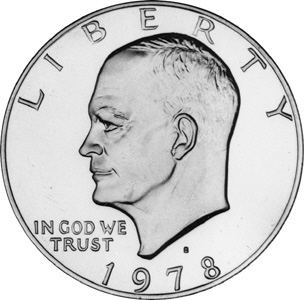 | ||
The United States Mint has minted over 20 different kinds of coins, of many different sizes. Often, it is difficult for people to get a grasp of what much of the historical coinage looked like, at least in relation to modern circulating coins. This chart shows all of the coin types, and their sizes, grouped by coins of similar size and by general composition.
Seven distinct types of coin composition have been utilized over the past 200 years: three base coin alloys, two silver alloys, gold, and in recent years, platinum. The base metal coins were generally alloys of copper (for 2 cent coins and lower), and copper/nickel (for 3 and 5 cent coins). Copper/nickel composition is also used for all modern "silver" coins.
Notes on the tables:
The largest coin ever minted by the US Mint was a gold "Half Union" pattern in 1877, weighing 83.45 grams, and 51.1 mm in diameter. The largest coin actually issued by the mint was the Panama-Pacific Exposition $50 gold commemorative, at 83.572 grams and 44 mm. An octagonal version of the coin was slightly larger, measuring 45 mm at its widest point.
